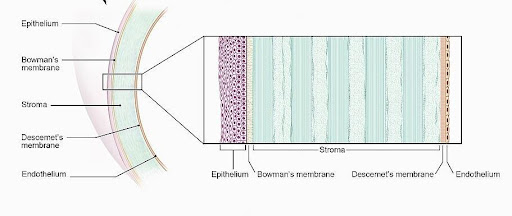What is corneal transplant?
A clear, dome-shaped and smooth cornea enables light to focus properly in the eye. When a person has scarred, damaged or swollen corneas, he will experience blurry vision or see glares when facing bright light.
Corneal transplant, also known as keratoplasty or a corneal graft, is a surgery to replace part of the cornea with healthy corneal tissue from a donor.
The surgery is performed to help improve sight for affected patients, while also relieving any pain and treating any infection and damage on the cornea.
Who needs a corneal transplant?
Among the common reasons for a keratoplasty is keratoconus which distorts the original shape of the cornea.
Surgery is also performed on patients who are experiencing:
- Fuchs’ dystrophy – a hereditary condition where cells in the inner layer of the cornea are working ineffectively
- Cornea scarring due to injury or infection
- Corneal ulcers that are not responding to other medical treatment
- Thinning, clouding and tearing of the cornea
- Swelling
- Complications due to previous eye surgery
Experienced eye doctors, such as our specialists at Eyecentric, are able to advise on the specific procedure that is best to treat your condition.
How is corneal transplant or keratoscopy done?
A keratoplasty can be performed under local anesthesia (when you eye area is numbed and you are awake) or general anesthesia (when you are unconscious). Surgery is performed one eye at a time and normally takes less than an hour to be completed.
There are three forms of corneal transplant:
-
Full thickness corneal transplant
-
Partial thickness corneal transplant
-
Endothelial keratoplasty
Full thickness corneal transplant is also called penetrating keratoplasty or PK. This is done when both the front and inner layers of the cornea are damaged and have to be removed. The eye surgeon will cut through the entire thickness of the cornea with a special instrument that makes a precise circular cut. A clear donated cornea is then sewn into place (sutures) and the stitches may be left in the eye for up to 12 months.
In the event where only the front or middle layer of the cornea is damaged, a partial thickness corneal transplant (deep anterior lamellar keratoplasty or DALK) is performed. The thin back layer or endothelial layer is untouched.
Endothelial keratoplasty is suggested when only the innermost layer of the cornea is damaged and needs to be replaced. Endothelial keratoplasty is divided to:
-
Descemet’s stripping (automated) endothelial keratoplasty (DSEK)
-
Descemet’s membrane Endothelial keratoplasty (DMEK)
For endothelial keratoplasty, only a few stitches (if any) is needed to close the incision as much of the cornea is left untouched. In many cases, no stitches are required and the layer is held in place by an air bubble which will later disappear naturally in a few days. The decision to undergo DESK or DMEK depends on the condition of the inner layer or endothelial and upon discussion with your ophthalmologist.
How long does it take to recover from corneal transplant?
The recovery period for corneal transplants or keratoplasty depends on the form of procedure performed. Patients who have undergone full thickness corneal transplant or PK will need longer recovery time which may take up to a year or longer before regaining complete vision.
Your eye doctor will prescribe medication including eyedrops and oral medication to help control infection, swelling and pain. Other precautions your Eyecentric ophthalmologist will like advise is to:
-
Wear eye protection (eye shield and glasses)
-
Avoid exercise and rubbing of the eyes in the days immediately after surgery
-
Lie on your back
-
Return for follow-up checkups
All surgical procedures carry a slight risk of complications. For corneal grafts, one possibility is a rejection of the donated cornea.
This is when the body’s immune system attacks the new cornea, causing loss of vision, eye pain, red eyes and increased sensitivity to light.
Other complications include:
- Slight bleeding
- Problems with the stitches securing the donated cornea
- Eye infection
- Increased pressure within the eyeball
- Swelling
- Retinal detachment
However, corneal transplants are generally considered to be safe and successful.
Book an appointment with an Eyecentric ophthalmologist at Bukit Tinggi Medical Centre (BTMC). Your vision is in safe hands.





